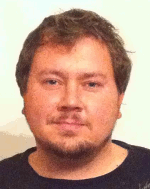 |
|
Biography
Dr. Mischa Thesberg is a Canadian researcher within the IuE. He has a B.Sc. (2008) in Computational Science from the University of Waterloo and an M.Sc. (2010) and Ph.D. (2014) in Computational Condensed Matter Physics from McMaster University. His research focuses on quantum transport and high-performance computing methods and his most recent interests include thermoelectrics, two-dimensional materials, novel nanoelectronics devices and quantum transport formalisms such as the Non-Equilibrium Green's Function (NEGF) approach.
Numerical Quantum Transport Studies of Nanostructured Thermoelectrics for Renewable Energy Technology
Our work in 2015 has focused on exploring the benefits and shortcomings of nano-structuring materials to enhance their potential for harvesting green, renewable thermoelectric power. Waste heat is created everywhere; in manufacturing, in the engine of an automobile, in the production of power, in the operation of computer chips, and in countless other places. The potential to turn even a fraction of this loss into useable energy is tremendous.
Although steam engines are highly efficient (~30% Carnot efficiency), there are clear limits to their application. They cannot be scaled down in size, they must be actively maintained, and their operation is complex, involving both moving-parts and fluids. The result is that many forms of waste heat have traditionally been considered "unrecoverable."
When an external temperature gradient is applied, a thermoelectric material is able to drive a current. Its ability to do so is a property of the material itself. Thermoelectric generators therefore have no mechanical parts, require no maintenance, and can even be scaled down to recover heat from small sources like computer chips. Thus, thermoelectrics have the potential to fill a void in waste-heat recovery and therefore to meet a need in green energy technology that has not traditionally been met.
The field of thermoelectrics, however, lies on something of a precipice. Although many theoretical schemes for engineering efficient thermoelectrics exist, commercially available thermoelectrics remain inefficient for most applications. One way in which to produce a material with a high thermoelectric efficiency involves locating an ideal material with maximum ZT. Another approach, however, is to engineer nano-sized features in more mundane (i.e. cheap, abundant, and well-known) materials in order to force thermoelectric improvement.
Understanding transport in such nano-structures is a difficult task as carriers flow through them in a way that is both very different from equilibrium and dominated by quantum mechanical effects. Using the non-equilibrium Green's function (NEGF) approach, we have been studying both strategies to improve ZT in materials through the introduction of nano-sized potential barriers, and the fragility of these enhancements in the face of the natural random imperfections that one would expect in any realistic structure. Our work has highlighted the potential for thermoelectric enhancement in low-dimensional superlattice structures, while also identifying some of the key culprits responsible for destroying this enhancement in real experiments.

Fig. 1: Charge density and potential in a two-dimensional channel containing an array of circular nanovoids.



